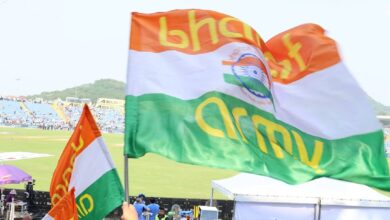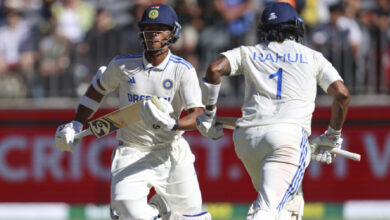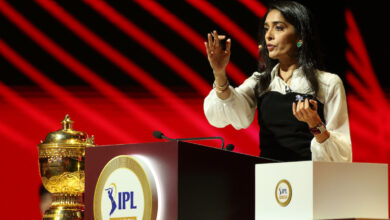Future loading… but please wait: Can Jaiswal, Gill & co. help India move past Rohit-Virat era? | Cricket News

In March this year, India’s very young Test team out-Bazballed England. In the fifth and final Test at Dharamsala, the playing XI had five batsmen in early or mid-20s – Shubman Gill (25), Yashasvi Jaiswal (22), Devdutt Padikkal (24), Sarfaraz Khan (26) and Dhruv Jurel (23). Gill scored a ton, Padikkal and Sarfaraz had 50s, Jurel was sharp behind the stumps and Jaiswal with 700 plus runs was the Man of the Series.For Rohit Sharma and his young ‘garden mein ghumne wale batsmen’ this was a real and metaphorical walk in the park. The world marveled at India’s bench strength, the subsequent World T20 would extend the euphoria. Those were the heady days – the batting pool overflowing, bees were humming over the blooming nursery and golden sunshine blanketed the healthy Indian cricket ecosystem.
But even then, beyond the horizon, there was a shade of grey. The present was pleasing but the future wasn’t blindingly bright. The youngsters looked the part but it didn’t seem that the page had turned. This didn’t feel like a generational shift, Gen Next didn’t seem ready for the lead roles.
India were and are on the top of the Test ranking but the spine of the team is in the mid-30s. In a team sport like cricket, transition doesn’t happen when the young perform in the absence of seniors. The first clear sign of a real change shines through when the rookies close doors on old hands. That hasn’t happened.
From the Dharamsala Five, three – Padikkal, Sarfaraz and Jurel – are unlikely to take the field next week when India start their busy Test season taking on the much-improved Bangladesh. Padikkal isn’t even in the squad. Sarfaraz and Jurel haven’t really cemented their places in the playing XI. Tears wouldn’t be shed and there wouldn’t be an outrage overdrive when KL Rahul and Rishabh Pant expectedly replace them for the September 19 to 23 Bangladesh game at Chennai.
As for Gill and Jaiswal, they are the class toppers. They are in the process of carving their own corners in the Test dressing room. But they haven’t been able to wipe out the asterisk next to their names.
This race of the 20-something cricketers is surely to be dynamic and India will follow it with anticipation and also a sense of nervousness. (Sportzpics)
Till as recently as the England Test series this year, Gill was said to be one failure away from going back to the domestic grind. Jaiswal has had a phenomenal start to his Test career but still these are early days. He hasn’t been tested on foreign soil against the Big 3 – England, South Africa and Australia. The jury is still out, they will be back to deliver their verdict after seeing him perform Down Under. the way, the series starts at Perth in November with Pat Cummins, Mitchell Starc and Josh Hazlewood sharing the new ball.
Over the next three months, India will be playing 10 Test matches – 5 at home and 5 in Australia. This will be the chance for Gill and Jaiswal, and their equally young peers, to be the pillars and plinth of the team of the post Virat-Rohit era.
Interestingly, that period, from the look of things, could end up as a throwback to the MS Dhoni chapter of Indian cricket. Wicket-keeper Rishabh Pant, 26, at present has out-ranked the most-privileged section of Indian cricket, the batsmen, to be a top captaincy contender.
But all that can change, this race of the 20-something cricketers is surely to be dynamic and India will follow it with anticipation and also a sense of nervousness. They have reasons to be skeptical. This cricket-crazy nation, while celebrating grand graduations, have also endured false dawns.
Over the years, post-2000 Indian batsmen showing early promise can be boxed in different categories. First there’s Sachin Tendulkar – a prodigy who never failed. A small step below are the likes of Kohli and Rohit – the strong-willed players and leaders who take lessons from their early makes to be the game’s greats. Then there are the equally lofty batting pedestals with batsmen with dinguished services to Indian cricket who chartered new courses – Dravid, Laxman, Ganguly, Sehwag, Pujara and Rahane. These too are big shoes to fill.
Prithvi Shaw has fallen off the radar after scoring a hundred on Test debut. (Sportzpics)
Worryingly, there’s also the Prithvi Shaw career trajectory. The 24-year-old Mumbai opener who scored a blazing hundred on Test debut but now doesn’t find a place in any of the four teams of the ongoing Duleep Trophy tournament.
So far, Jaiswal and Gill have handled fame and fortune with maturity. They have shown the drive and skill to rise among the ranks. During off-season Jaiswal moves out of Mumbai to the spartan Rajasthan Royals academy in interior Maharashtra to improve as a batsman. Gill, the boy from the border village of Chak Kherewala in Punjab, had almost a Tendulkaresque start. On the junior circuit he never failed, but at the senior level he faced a hiccup. He would find his way again, rediscover the love for training and was back in business.
However, it will be only the end of this WTC cycle next year that India’s Test team for the second quarter of this century should take shape. It’s unwise to jump the gun, it’s prudent to wait before passing the judgement on India’s 20-something batsmen.
The broadcasters would want you to believe that Gill and Jaiswal are the obvious heirs apparent to Virat and Rohit – two cricketers with formidable bodies of work. But that’s just the hype machinery doing its job, selling a dream so that the subscribers stay tuned. The fans do understand cricket but the endless bombardment of pseudo-positivity can brain-wash the most rational of minds.
In the words of Rob Delaney, the American writer, actor and comedian, “Optimism is good, I suffer from it congenitally, but let’s not be ridiculous …”
Send your feedback to sandydwivedi@gmail.com.







